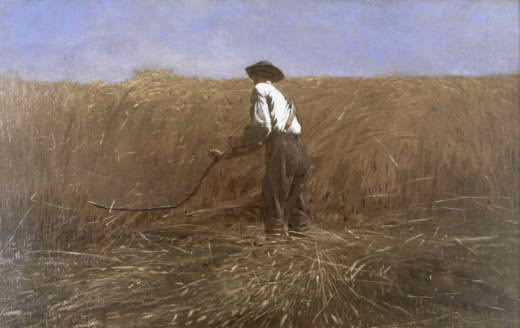Haymakers Punch

Decades ago, haying season on a farm meant the difference between farm animals eating well through the winter or starving. In most areas hay was brought in twice a year; once in late spring, about June, and once in late summer or August.
It was a time when all the neighbors came together to help one another with the backbreaking task of cutting, turning, drying and storing hay. Not only was haying a race to cut at the right time, so the hay would have the most nutrients and the most feed value for the animals, but it was a race against summer rain storms and humid weather. Rain on uncut hay would delay the whole process, while rain on already cut hay meant there was a chance that the hay would not dry properly or could mold in storage. Humid weather could also promote bacteria and mold growth, both of which had the potential to sicken livestock.
The work started early, usually on hot spring and summer days. After the hay was cut and raked to cure, then turned to cure some more it was piled onto wagons and taken to the barn for storage. In later years, after the mechanization of agriculture, hay was baled before being moved to the barn and stored. Workers moved swiftly and deliberately through the fields forking hay onto the wagons or throwing bales onto wagons or into trucks. No matter which method they used haying was backbreaking work that took its toll on the body.
To keep workers nourished and hydrated, a homebrew called Switchel was served. Some credit the Amish for inventing this energy boosting beverage of our country’s pioneers. But, research shows its use was widespread as far back as the 1600s. Laura Ingalls Wilder called it ginger-water in the book The Long Winter, and references how it quenched the thirst without upsetting the stomach after hot work making hay.
Switchel is made from potent sources of protein and sugar, molasses, vinegar, honey and ginger for flavor, it was quite the thing for quenching the thirst and providing hydration and stamina for the men working in the hay fields from daybreak till the full moon rose.
There are plenty of Switchel recipes on the internet if you want to try our forefather’s concoction, but I much prefer the modern day version of this Haymakers Punch, made with green tea and pure fruit juice.
To make your own Haymakers Punch (drinkable even if you never work in a hay field), brew two pots of strong green tea, then pour into a large stainless steel stockpot. Add 2 cups of pure berry fruit juice (or, experiment with your favorite juices), and ½ cup of organic local honey. Simmer on a low heat until all the honey has dissolved. Honey is a true natural energy source. The green tea won’t give the same instant jolt that coffee does, but instead slowly raises your energy level into a heightened state of awareness.
When the punch has cooled you can store it in mason jars in the fridge or freeze it for later use. The Haymakers Punch is ready to drink any time you need a little extra boost from farm chores or a day spent digging in the garden. It also works well when fighting a cold or sore throat. Simply pour into a mug, add a bit more honey to taste and a few squeezes of lemon then warm it in the microwave for two minutes. It’ll do the trick.
Here’s something to ponder. If you could get the same kind of energy boost from Haymakers Punch without consuming all the corn syrup, food coloring and artificial flavorings found in other energy drinks which would you choose? Maybe some time spent on the internet digging up Switchel recipes and developing your own version is something worth considering.
Recent comments
Aenean nonummy hendrerit mauris. Phasellus porta.